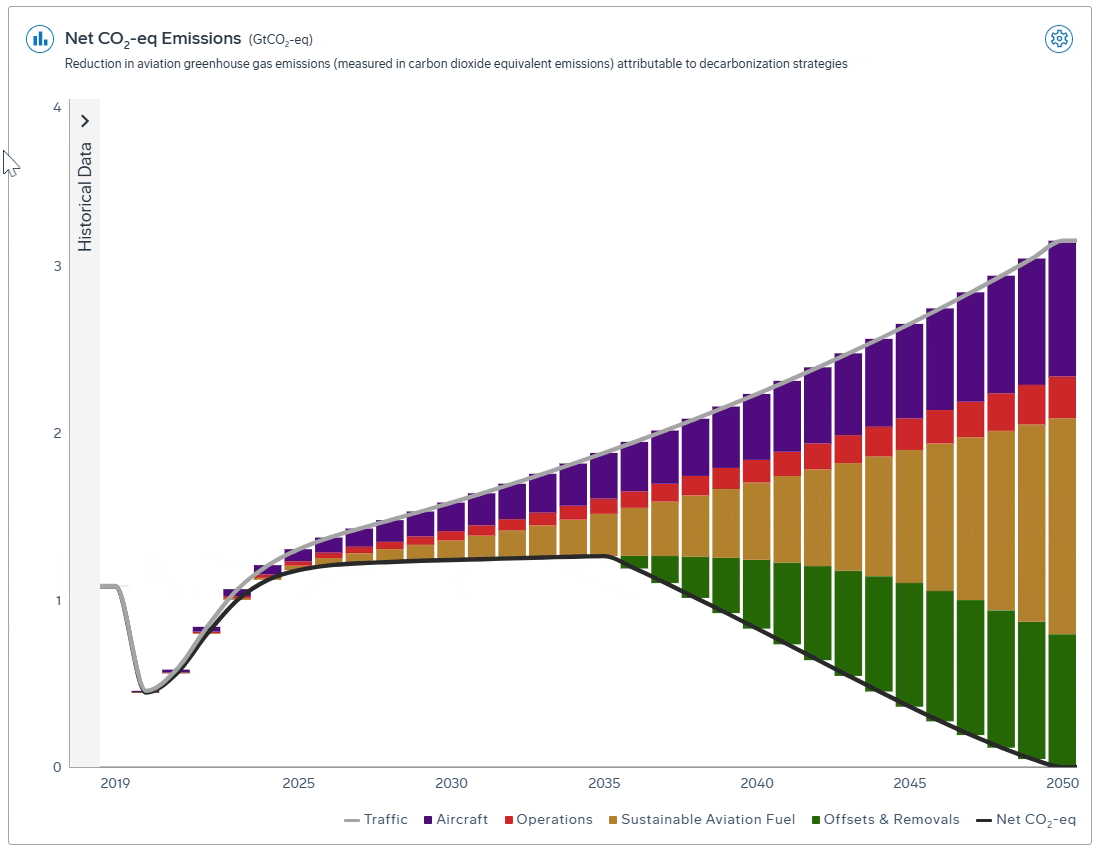Explore the Updates to Cascade’s Energy Strategy
The newest release of Boeing’s Cascade Climate Impact Model enables the user to explore the emissions reduction potential of different energy carriers for aviation such as Sustainable Aviation Fuel (SAF), hydrogen, and electricity.
Why it Matters:
Understanding the amount of SAF, hydrogen, and electricity that is required to achieve net zero is crucial for determining the ramp in production that is required and evaluating whether this progress is feasible.
What’s New:
SAF can be made from biological sources (fats, oils & greases, sugars & starches, novel energy crops, or waste & residues) or from electricity and hydrogen (eFuels). The carbon intensity of eFuels depends on the sources of electricity and hydrogen used. Carbon intensity is the amount of carbon dioxide emissions released per unit of energy.
Within Cascade, hydrogen can either be produced from natural gas, which is called gray hydrogen, or from water and electricity using electrolysis. The carbon intensity of hydrogen made via electrolysis depends on the source of electricity used.
The composition and carbon intensity of SAF, hydrogen, and electricity from the following sources are now fully customizable:
